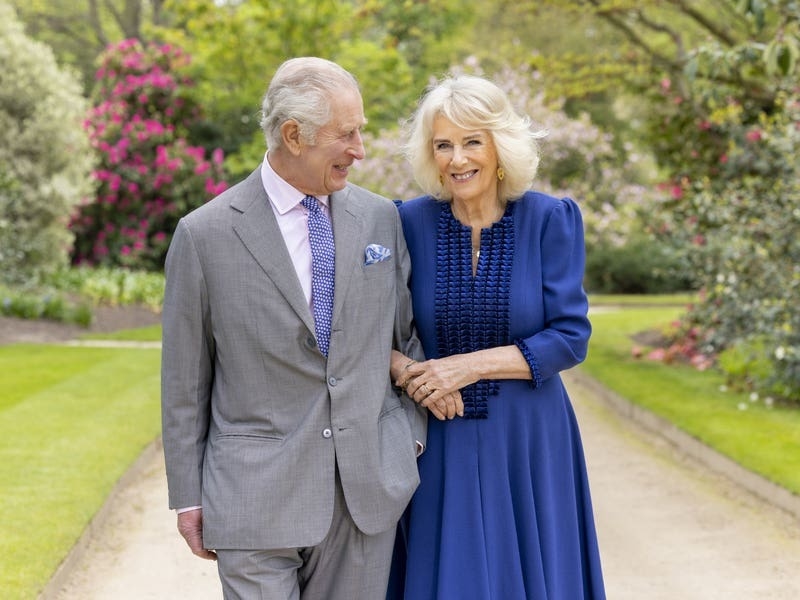The national flower of Wales, it comes in more colours than just yellow and comprises over 13,000 varieties.
Jersey has enjoyed a reputation for its superior breed of dairy cow and premium agricultural produce for centuries.
And while the Jersey Royal potato may have been the premier export crop for nigh on 100 years, the variety of flowers grown here in the 20th century was so abundant that the Island was known as the Floral Isle.
Varieties then included anemones, carnations, pinks, chrysanthemums, gypsophilia, irises, gladioli, freesias and roses, which were grown both in glasshouses and outdoors.
The combination of Britain’s entry into the EU, increased competition from growers in the UK and Europe – who enjoy greater economies of scale and costs, and also benefit from generous EU agricultural subsidies and funding that is not available to local farmers – has greatly reduced Jersey’s export flower industry.
In addition to daffodils, peonies and bedding plants are exported but in fewer numbers.
It was not just the flower export market that suffered. Twenty-five years ago Jersey farmers exported five other major crops: calabrese, cauliflowers, courgettes, tomatoes and Jersey Royal potatoes. Today only the Jersey Royal new-season potato remains as the Island’s most famous and highest-volume export crop.
Over the last quarter of a century, daffodil production has declined by about 25%. The 2019 season was 20% down on the five-year average at about 700 vergées, compared with an 836-vergée average over the past five years.
The value of daffodil exports in 2014 was £1.02m, compared with £1.75m in 1994 which, if adjusted for inflation, would equate to £3.2m today.
Although last year’s agricultural statistics are not yet known, the value of last year’s crop is expected to be around £1m for bulbs and flowers. In 2014, flower exports accounted for £1.02m and £267,000 in bulb sales.
Grown to bloom
in the USA
Woodside Farms exports flowers and bulbs to the UK and Europe and has been exporting daffodils to the United States for over 20 years. The company began growing daffodils in the mid-1960s.
It takes three days from flowers being picked to going on sale in Boston, Massachusetts – the same time it takes to reach markets in Scotland.
The peak period for export to France is before La Fête des Grands-Mères (Grandmothers’ Festival) which falls on the first Sunday of March, when it is customary to present grandmothers with a bunch of daffodils.
Depending on the weather, the Island’s daffodil season lasts from December to late March or early April. When Easter falls in March, it is good news for daffodil growers as the blooms – traditional gifts for the holiday and preceding Mother’s Day – tend to be in greater supply.
Jersey’s favourable growing conditions – mild winters, geographical location, high levels of sunshine and fertile soil – give the Island’s growers a seasonal advantage over other British growers, who are largely concentrated in Cornwall and Lincolnshire.
Flowers are picked as pencil-thin green stems long before they bloom, to ensure that they don’t open until after being purchased in Paris, London or Massachusetts.
Of the 35 million flowers Woodside expects to harvest this year, between four and five million will go to the United States, up to two million to European destinations, including Scandinavia, while the rest will go to the UK.
The business also exports around 500 to 600 tons of daffodil bulbs a year with 30% going to France and the rest to the UK. It does not export directly to France with all its produce going into the UK for onward distribution.
When a daffodil bulb is planted in the summer, the flower is already formed inside. Production is extended by planting early-, mid- and late-season varieties and, as with the Jersey Royal, the Island’s favourable growing conditions give local growers the advantage over the main competition from Cornwall.
Jersey’s remaining daffodil growers
Woodside Farms
Woodside Farms is Jersey’s biggest producer of local fresh produce, supplying Co-op, Waitrose and Sandpiper stores in the Channel Islands, as well as wholesalers, farm shops and the UK export market.
Charlie Gallichan is the sixth generation of the family to lead the business, which is based in Trinity with farmland across the Island.
Woodside is also Jersey’s biggest producer of daffodils and bulbs. This season Mr Gallichan expects his workers will pick 35 million daffodils.
Master Farms
This set-up is run by the Le Maistre family – brothers Peter and Philip and their sons Matthew and Phil.
They run a mixed farm, growing produce by conventional and organic means, based at Les Prés Manor in Grouville – the family home since 1841 – with a dairy unit of 240 milking cows at Westlands Farm in St Brelade.
The family grows a diverse range of crops to supply local supermarkets and farm shops. Master Farms also exports produce to the UK.
Master Farms grows 18 vergées of daffodils in normal winter conditions, from mid-January to the end of March. These are sold locally and also used to supply Woodside Farms.
Somerleigh Farms
Somerleigh Farms is a sixth-generation Jersey family business run by Peter Lamy, son Matthew and daughter Claire, with the assistance of Matthew’s wife, Dominque.
It is based in St Peter and St Ouen with land across six parishes.
They grow daffodils for the local market while also supplying Woodside Farms. This season they expect to pick 1.2 million bunches between late December 2019 to the middle of next month, grown over 53 vergées.
Somerleigh Farms also grows Jersey Royals for export to the UK through Albert Bartlett.
Daffodil facts:
nThe daffodil (Narcissus pseudonarcissus) is a bulb-forming plant in the amaryllis family (Amaryllidaceae).
nIt is native to northern Europe and grown in temperate climates around the world.
nDaffodils go by many names and are occasionally referred to as jonquils. In England they are known as Lent lilies as they bloom in the traditional Christian period of fasting up to Easter.
nDaffodils are the symbol of tenth wedding anniversaries and the national flower of Wales.
nAncient Romans cultivated daffodils and believed that the sap extracted from
the flowers possessed healing properties.
nThere are 13 types of daffodils
including trumpet, doubles, jonquilla, split corona, large- and small-cupped and wild.
nIncluding hybrids, there are over 13,000 distinct daffodil varieties within these types. These include Sir Winston Churchill, ice follies, cheerfulness, jetfire, early bride and tête-à-tête.
Daffodil folklore
lIf you present someone with a single daffodil, legend has it that bad luck will come their way, whereas the gift of a bunch of the flowers is believed to ensure happiness to the recipient.
lAccording to Greek legend, the daffodil came into existence out of vanity. A young boy, Narcissus, was so obsessed with his beauty and admiring his reflection in a pond that he died of starvation. The Greek gods turned his remains into the first daffodil as a lesson in humility.






